Introduction:
Yet another ever-popular request is to identify a particular existing paving so that the property owner or the contractor can obtain additional or replacement units to repair or extend or replace what has been lurking on the patio, in a courtyard, on a driveway or in a town centre for umpteen years.
It’s easy to understand why the belief that simply identifying the ‘old’ paving will enable further supplies to be obtained and the repair or extension carried out without a problem, but that’s possibly a little naïve. For various reasons, if the ‘old’ paving is more than, say two or three years of age, it’s highly unlikely a true match would be possible.
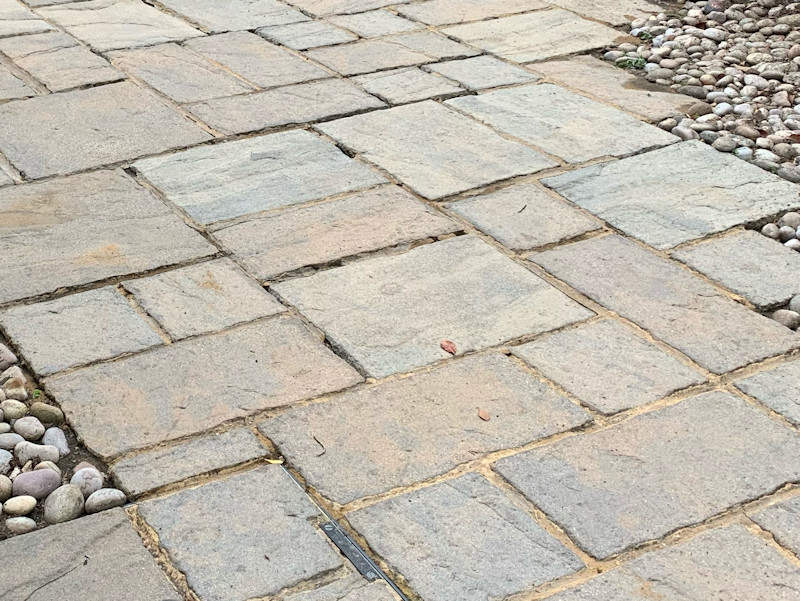
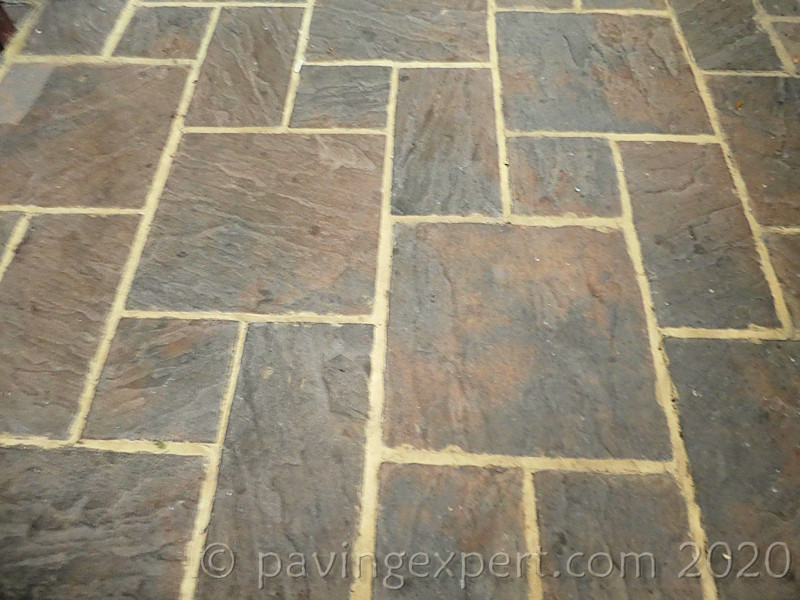
Identifying the paving in question is often the easier part of the task. Many products are reasonably well-known, and this website offers both a What’s this Paving consultancy and a Library Look-Up service which can aid identification but there are several other factors that need to be considered before declaring a match can be made. The more important ones are considered below.
End of production
The biggest difficulty in sourcing additional paving is the strong likelihood that its day is over, that there is no more. Production may have stopped, and the older the paving, the more likely it is that the supply is exhausted. Concrete and some clay products tend to have a period of being fashionable and then they fall out favour, sales tail off, and eventually, the manufacturer ceases production, and launches something new in its place. Similarly with stone: tastes change and what was a big seller a decade ago may now be seen as passé – remember Travertine, anyone?
However, even if the particular product has some longevity, concrete, clay and stone have other problems that make matching fraught with difficulty, and some of these will, in time, come to apply to porcelain and ceramics.
Changes in Bedrock
Considering first natural stone, the biggest issue with continuity of supply is simply running out of quarriable rock. Many of us in northern Britain and the fringes of Ireland will be familiar with ‘abandoned’ quarries or delphs. In many, the quarrying ceased because it was no longer economic but often the economics were determined by the increased difficulty in obtaining suitable rock. The deeper you go, the more it costs, and what was a good value-for-money stone at 30m depth can turn out to be a bit too pricey when it has to be dug out from 300mm depth.
Bedrock changes throughout a quarry. A seam of excellent flagstone can suddenly run into a section of excessive fracturing or faulting, and the rock itself can change, maybe becoming to soft, or too friable. It can often change colour, and that quarry providing a lovely honey-buff sandstone suddenly runs into a more iron-rich rock and the colour becomes coral, or pink or orange.
The notorious G603 silver grey granite which dominated so much of the paving market at the turn of the 21st century is now something of a rarity as the economically-viable supplies are almost exhausted and this, combined with government regulations, has all but terminated the supply.
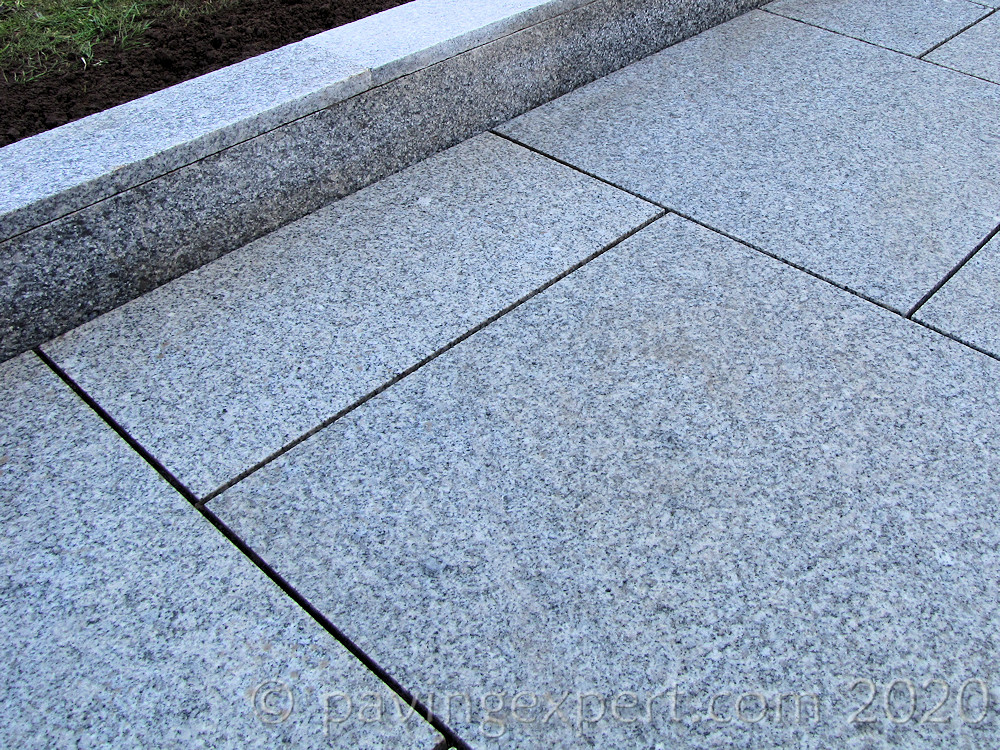
Changes in aggregates
Something similar can affect both concrete and clay paving. The aggregates required to make a particular concrete run out, or the clay pit supplying the kilns hit patches of sand or mud or silt. Even a minor change in the precise sand used for a concrete, or the nature of the coarse aggregate, will often have a noticeable impact on the eventual colouring and texture. This may be partially compensated by adding or amending the dyes used, but even that can result in a block or flag or kerb that looks distinctly different. Even a change in the nature of the water used, from hard to soft or vice-versa, can affect the characteristics of a concrete.
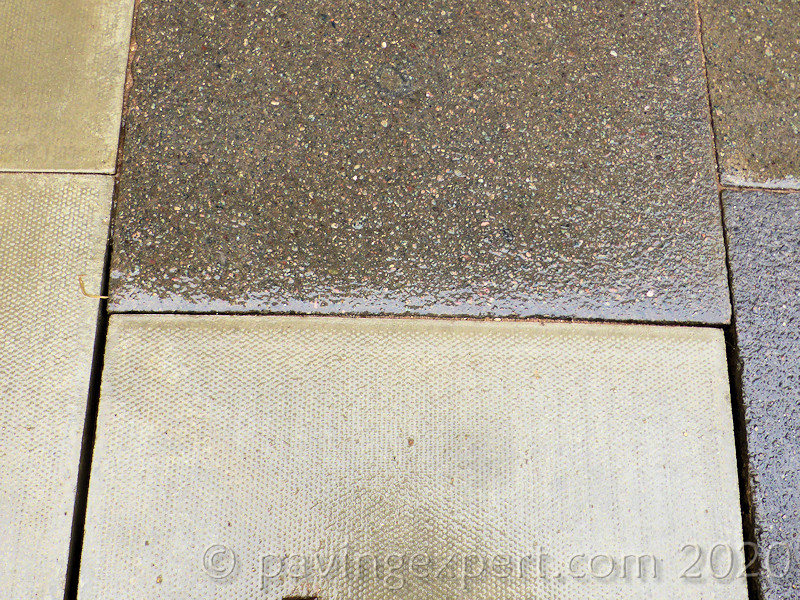
Changes in concrete mixes
And beyond the continuity of supply of the aggregates, there are what we might think of as ‘elective changes’ in the production of a concrete. A new plasticiser might be introduced by a supplier; the manufacturer may decide to add an anti-efflorescence agent to the mix; new allegedly ‘improved’ dyes are being introduced all the time.
Our knowledge and understanding of aggregates is continually developing, and the sand used, say, twenty years’ ago has since been dropped in favour of an ‘improved’ sand, one with a more angular grain perhaps, or one that has been more thoroughly washed to rinse out impurities such as lignite or iron minerals. Even more so with the coarse aggregate, which, as mentioned above, is subject to the whims and vagaries of the quarrying industry. Where a limestone aggregate was used a decade ago, current manufacturing may have ‘upgraded’ that to a granite or diorite aggregate.
Any and all of these can result in changes to the finished product.
Changes in moulds
Another ‘elective’ change is the introduction of new moulds. No moulds last forever, and some of the lower-cost wet-cast concrete pavings rely on moulds with a production cycle of maybe 5,000 to 10,000 units before the abrasion of the aggregates and the aggressiveness of the cement renders them useless. New moulds for the more upmarket castings may well be created from a carefully preserved master mould, but so many wet-cast producers buy-in their moulds from specialist manufacturers who are continually updating and revising their own range.
Steel moulds used for hydraulically-pressed pavings (BS Flags, Blocks, Kerbs, etc.) have a longer life, but even these are not immune to changes. Look at the size of the chamfers on Concrete Block Pavers (CBPs) produced in, say, the 1980s to those on blocks made in more recent years.
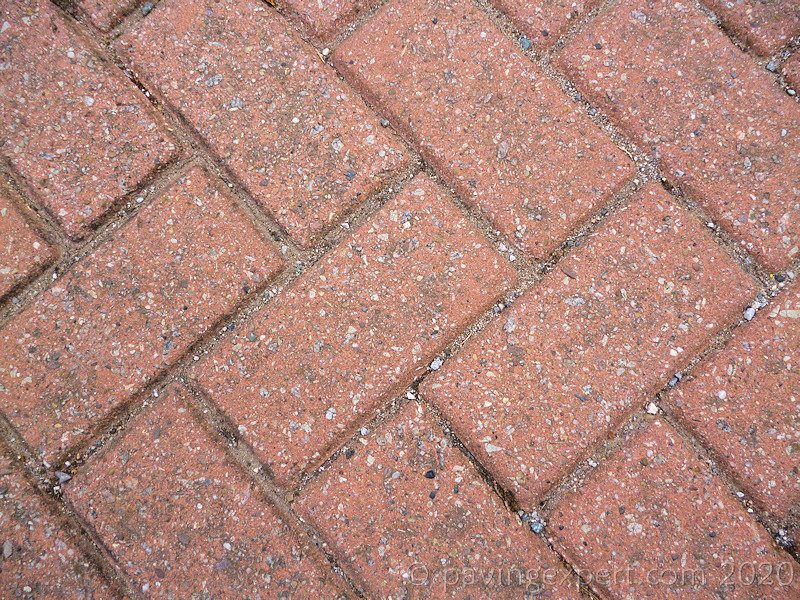
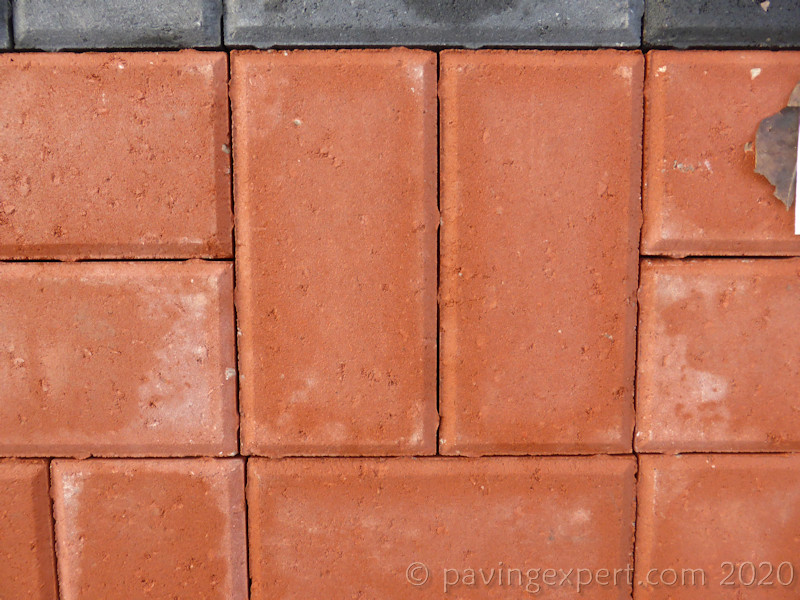
Weathering
Finally, the most apparent different between old and new paving is most likely to be due to environmental factors. Much of that will be weathering, obviously, but also colonisation by algae, lichens and other vegetation, plus fading of any artificial dyes used with concrete products, or even tonal changes in natural stone due to exposure to UV light and/or slightly acidic rainfall – just look how quickly the notorious Black Limestone fades to steel-grey due to the etching action of the rainfall in Britain and Ireland that is ever so slightly acidic (pH 6.0 to 6.5 – where 7.0 is neutral).
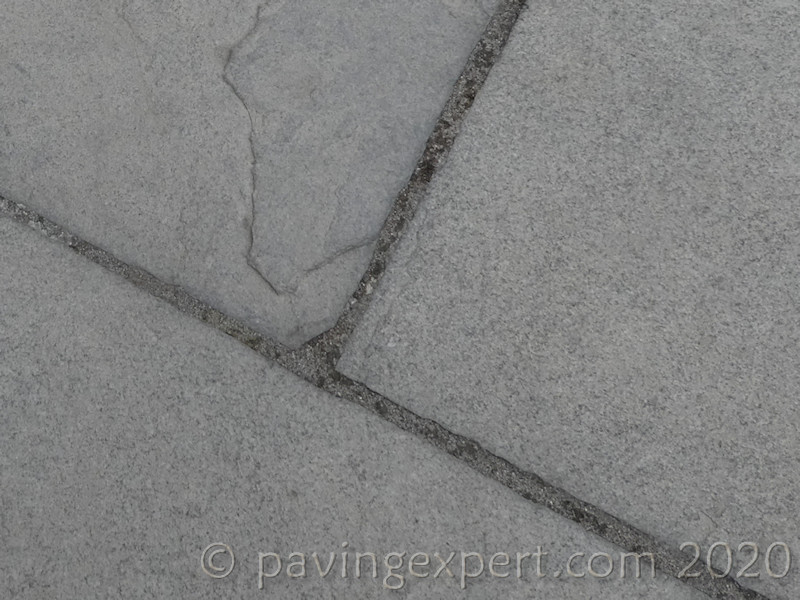
No matter what the paving, the odds of obtaining an unnoticeable match when introducing new units to the old is pretty low. It’s uncanny how even a slight difference in colour or texture can stand out like the proverbial sore thumb once laid. Can you live with that? Of course, any new paving will ‘weather’ and, maybe, in a year or three, any visual differences will be barely noticeable, but you have to be realistic: in all likelihood, a perfect match is not going to be possible.
Further Info:
There’s a separate page on this website which looks at how new and old block paving can be used together to minimise the visual disturbance. Some of the techniques explored there can be used with other materials, so it could well be worth taking a look.
